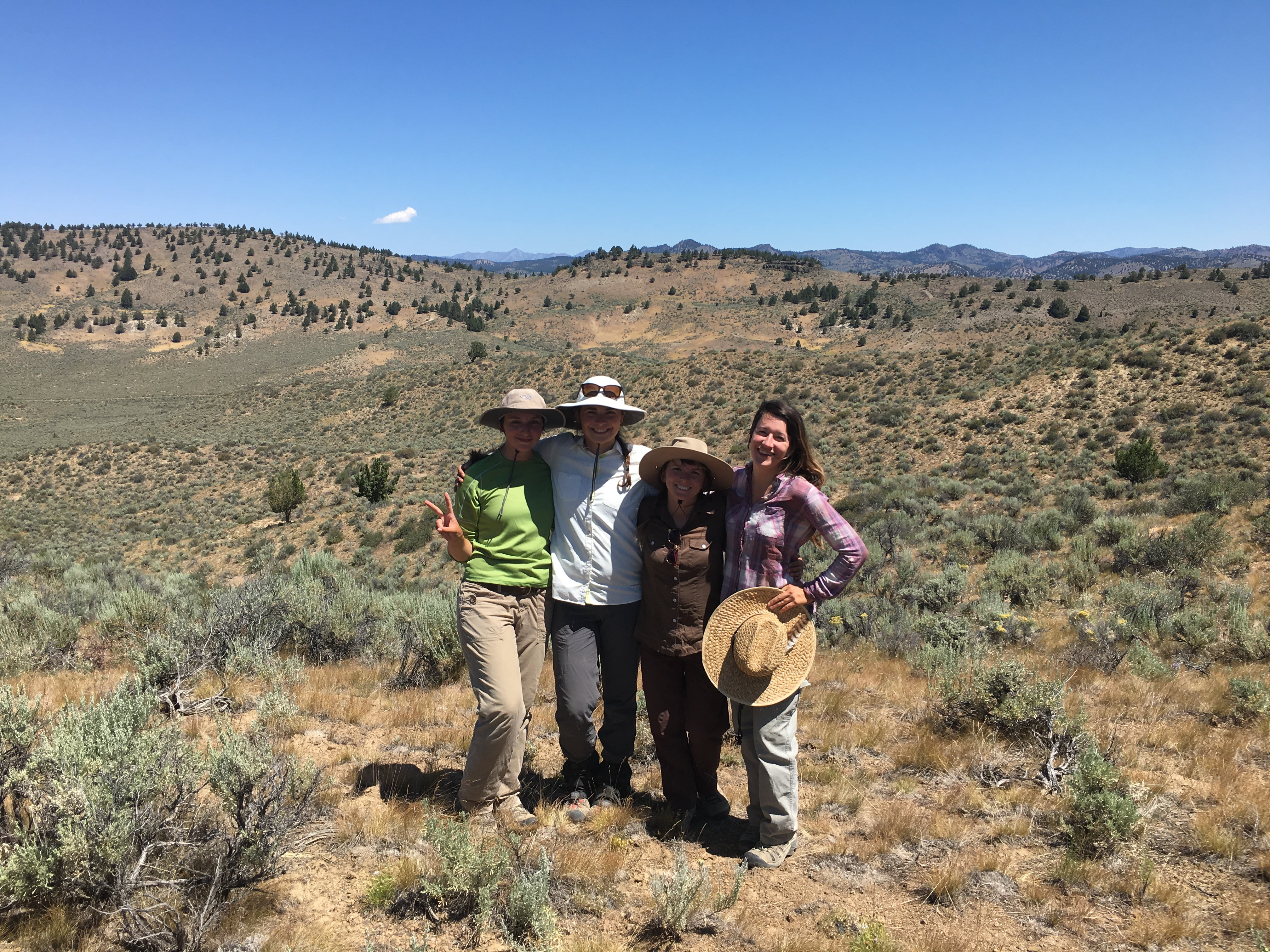
Lupine in the high desert
A couple of weeks ago the Conservation Research field crew traveled out to Unity, Oregon, to monitor Lupinus lepidus var. cusickii. Also known as Cusick’s lupine, this small, perennial plant is listed as endangered by the Oregon Department of Agriculture, “special status” by the Bureau of Land Management, and a Species of Concern by the U.S. Fish and Wildlife Service. It is endemic to a very small region in eastern Oregon, and exists primarily in an even smaller subset of microclimates within that region.
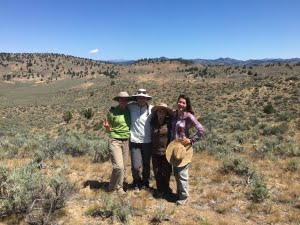
We visited these sites at the end of June not just because we love working in the heat of the desert in summer, but also because the lupine is flowering at this time. Our monitoring work involved taking a census of all individual plants in the area, grouped into categories according to whether they were reproductive or not. Being able to spot the purple flowers was a big advantage in telling them apart, especially since even the smallest plants could be flowering.
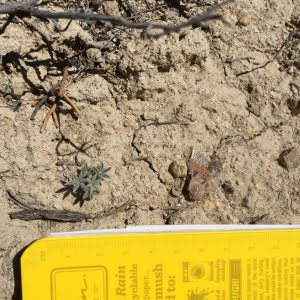
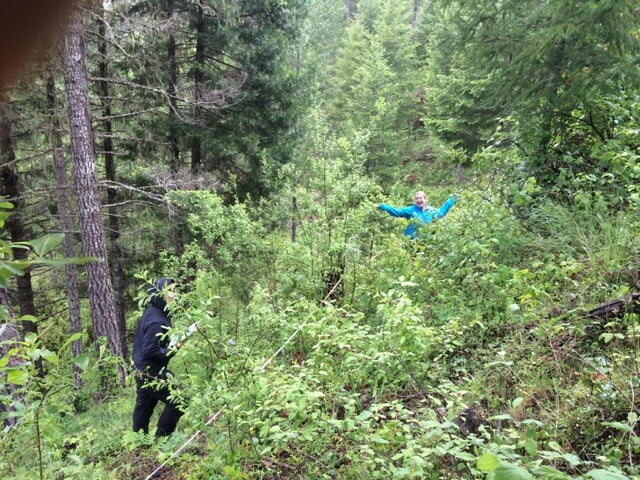
Lupinus lepidus var. cusickii grows primarily on tuffaceous soils, tuff being ancient volcanic ash that has been compacted into rock over millennia. It is light in color and light to the touch, is poor in nutrients and does not retain water well, making it a challenging substrate for most plants to grow on. Tuffaceous soils are also susceptible to erosion, an action which is exacerbated by the use of off-road vehicles on these slopes. The BLM, which manages the remaining Cusick’s lupine habitat, has tried to discourage ORV use at these sites by erecting exclosures with fencing. Our crew was kept busy all week counting plants both in and outside of these fenced areas.
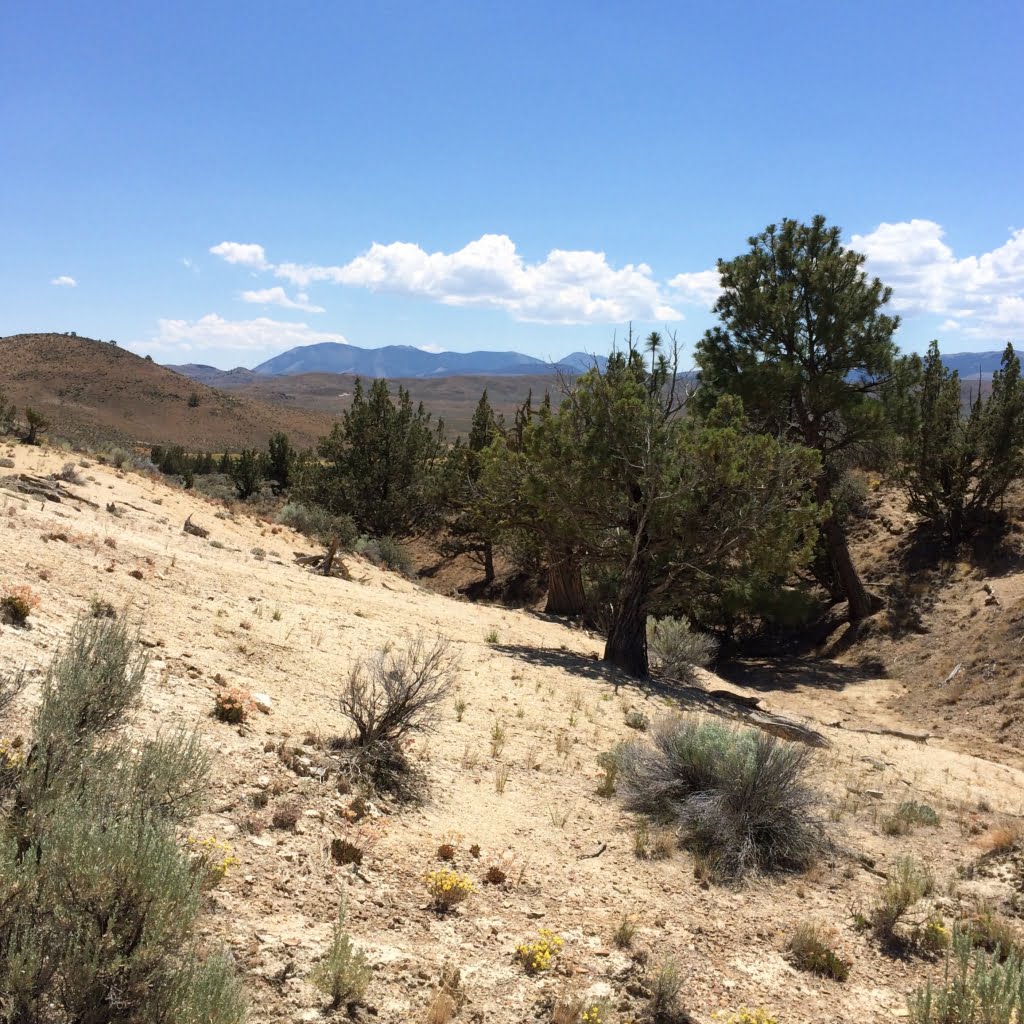
Our monitoring work also involved laying down 10 meter transect lines amidst lupine habitat and collecting information on the other plant species present there. We were fortunate to be joined on our first day by the BLM Fire Botanist, Roger Ferriel, whose knowledge and experience with the local flora was invaluable. Thank you, Roger!
Throughout this field season our crew has been enchanted by the beauty of the high desert of eastern Oregon, and our trip to Unity was no exception. The deep blue sky and occasional white clouds (merciful shade!) meet the expansive rolling land in perfect silence and the air is full of the scent of juniper trees and big sagebrush. We saw many interesting birds and sign of other animals, including woodrats (Neotoma spp.), coyote, and owls.

As with any trip, our crew encountered the usual challenges of field work, from missing GPS data to high temperatures and steep, slippery terrain. As usual, all hurdles were met with the aplomb that has been consistent throughout the season, working together as a team to assess and adapt to constantly changing and oftentimes less than ideal conditions. Being part of this crew has been an honor and a real pleasure, even in the toughest conditions. Luckily, it’s not over yet!


